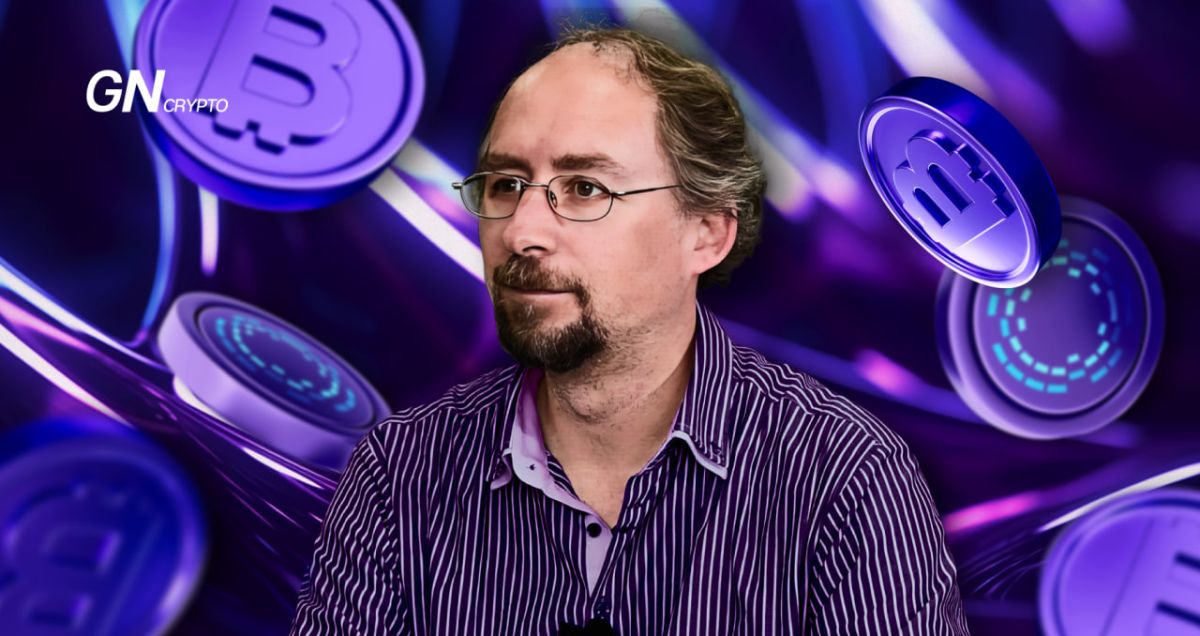Adam Back: The Cypherpunk and Blockstream CEO

Adam Back is the brain behind the Hashcash proof-of-work system and the co-founder of Blockstream. His extensive list of achievements is impressive, yet many know him primarily as a cypherpunk and a close associate of Satoshi Nakamoto.
On this page
Adam Back occupies a lofty position among crypto legends, having played a pivotal role in shaping today's digital landscape. He is the sole witness to Satoshi's creation of the Bitcoin White Paper, and his groundbreaking work in data encryption in 1997 remains a cornerstone of modern cryptocurrency mining.
While rumors have linked Adam Back to Satoshi Nakamoto, he's personally denied these claims on his X (Twitter) account.
It's worth noting that Hal Finney and Nick Szabo have also been subjects of similar speculation. The crypto community has a penchant for rumors and conspiracy theories, leading to imposters like Craig Wright capitalizing on the intrigue.
Adam Back. Source: Linkendin
Adam Back Biography
Adam Back was born in London in 1970. A quintessential techie, he boasts degrees in advanced mathematics, economics, and physics, as well as a Ph.D. in computer science. Even before the digital revolution, Adam's early research focused on encrypting private data for email accounts.
His monumental stride in digital innovation occurred when he introduced a system resembling Proof-of-Work to the community, a method still used today as the consensus mechanism for the BTC blockchain.
Since then, he's emerged as one of the leading figures in applied cryptography.
Adam Back: Hashcash is the only counter-measure against email spam
His pioneering work, titled “Hashcash – A Denial of Service Counter-Measure,” introduced groundbreaking algorithms to combat the growing issue of spam in email servers. At the heart of his proposal was a unique label added to email headers. This label signified that a sender had expended computational power and personal effort on the email, thus making it less likely to be spam. This concept was innovative, especially since most promotional and phishing emails are automated to cut down on sending costs.
Today, such labels still play an integral role. Email services employ this method to direct questionable emails straight into the “Spam” folder. Case in point, Microsoft's “Email Postmark” feature operates on the same principle of evidencing computational exertion.
By 2002, Adam Back had fine-tuned this concept, which later inspired Nakamoto to develop the PoW algorithm.
Adam Back: Blockstream is championing Bitcoin's innovations
Blockstream stands as a cornerstone for financial markets built on the Bitcoin blockchain.
The concept of autonomous control and storage of crypto assets has intrigued Adam Back since 2011. Collaborating with Alex Fowler and Erik Svenson, he unveiled a platform dedicated to Bitcoin sidechains. While he initially began as a co-founder, by 2016 he took the helm as the Chief Executive Officer of the venture.
The essence of Blockstream's mission is to craft the financial bedrock of tomorrow, anchored in peer-to-peer transactions within open digital frameworks. In essence, this platform brings to life Back's aspiration to eliminate any intermediaries from the Bitcoin ecosystem.
Blockstream offers a suite of solutions:
- Bitcoin Mining: Tailored mining services for institutional players.
- Blockstream Satellite: Broadcasting BTC blockchain updates via satellite.
- Liquid Network: Facilitating private BTC transactions.
- Core Lightning: A plug-and-play solution to set up and run a node.
- Blockstream Green: A cross-platform crypto wallet.
- Blockstream Finance: A hub for crypto trading and exchanges.
- Blockstream Explorer: A detailed view of the blockchain.
- Elements: An open-source platform to deploy custom sidechains and blockchains.
This ecosystem provides developers with a sandbox to implement their unique Bitcoin-based projects. As a tribute to Adam Back's foundational role in Blockstream, a special NFT was released.
NFT honoring Adam Back. Source: makersplace
Adam Back: The crypto market is water
A fervent advocate of Satoshi Nakamoto's vision, Adam Back stands as a Bitcoin maximalist, deeply rooted in libertarian perspectives regarding digital markets. He's never been one to shy away from conflicts with other thought leaders in the industry, often making headlines with his provocative remarks.
For instance, he's publicly compared Ethereum to Ponzi schemes like OneCoin and Bitconnect. He once referred to Vitalik Buterin as “a bit of a word salad smart bits & bytes.” This critique emerged amidst a discussion about the merits of the PoS consensus mechanism versus PoW.
While Back acknowledges Justin Sun's marketing prowess, he's skeptical of his technical depth. He's even gone so far as to question Charles Hoskinson's competency outright.
While Nakamoto's ally might not be the crypto community's favorite figure, his unwavering dedication to Bitcoin and commendable cryptographic skills command respect.
Adam Back remains bullish about Bitcoin's trajectory, positing that the market has an intrinsic ability for self-regulation. He believes that the essence of cryptocurrencies ensures they can weather any form of regulatory storm.
“The crypto market is water. He is very active; there are workarounds and the market is efficient because there is a huge appetite [for crypto]… As soon as an exchange closes or stops serving one market, people will just move to another exchange, or move to an international exchange.”
“There are only going to be 21 million coins, there are billions of people in the world, some reasonable percentage of who might find it interesting to own a piece of Bitcoin.”
The content on The Coinomist is for informational purposes only and should not be interpreted as financial advice. While we strive to provide accurate and up-to-date information, we do not guarantee the accuracy, completeness, or reliability of any content. Neither we accept liability for any errors or omissions in the information provided or for any financial losses incurred as a result of relying on this information. Actions based on this content are at your own risk. Always do your own research and consult a professional. See our Terms, Privacy Policy, and Disclaimers for more details.



























